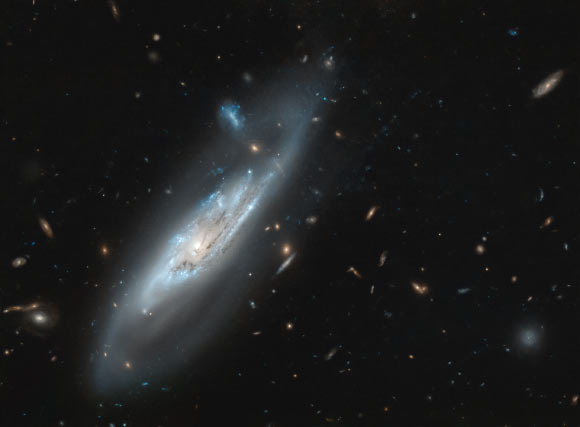The NASA/ESA Hubble Space Telescope has captured a striking new photo of the barred spiral galaxy NGC 4848.

This Hubble image shows the barred spiral galaxy NGC 4848. The picture was snapped by Hubble’s Wide Field Camera 3 (WFC3). The image was made through two filters. The color results from assigning different hues to each monochromatic image associated with an individual filter. Image credit: NASA / ESA / Hubble / M. Gregg.
NGC 4848 lies around 336 million light-years away in the northern constellation of Coma Berenices.
This galaxy was discovered on April 21, 1865 by the German astronomer Heinrich Louis d’Arrest.
Also known as UGC 8082 and IRAS 12556+2830, it has a diameter of approximately 150,000 light-years.
NGC 4848 is a member of the Coma cluster (also known as Abell 1656), a large structure of over a thousand galaxies bound together by gravity.
Astronomers classify NGC 4848 as an active barred spiral galaxy.
“A notable feature of most spiral galaxies is the multitude of arching spiral arms that seemingly spin out from the galaxy’s center,” Hubble astronomers said.
“In this Hubble image, the stunning silvery-blue spiral arms of NGC 4848 are observed in immense detail.”
“Not only do we see the inner section of the spiral arms containing hundreds of thousands of young, bright, blue stars, but Hubble also captured the extremely faint wispy tails of the outer spiral arms,” they added.
“If you are situated in the northern hemisphere with a large telescope, you might just be able to observe the ghost-like appearance of this faint galaxy within the faint constellation of Coma Berenices.”







